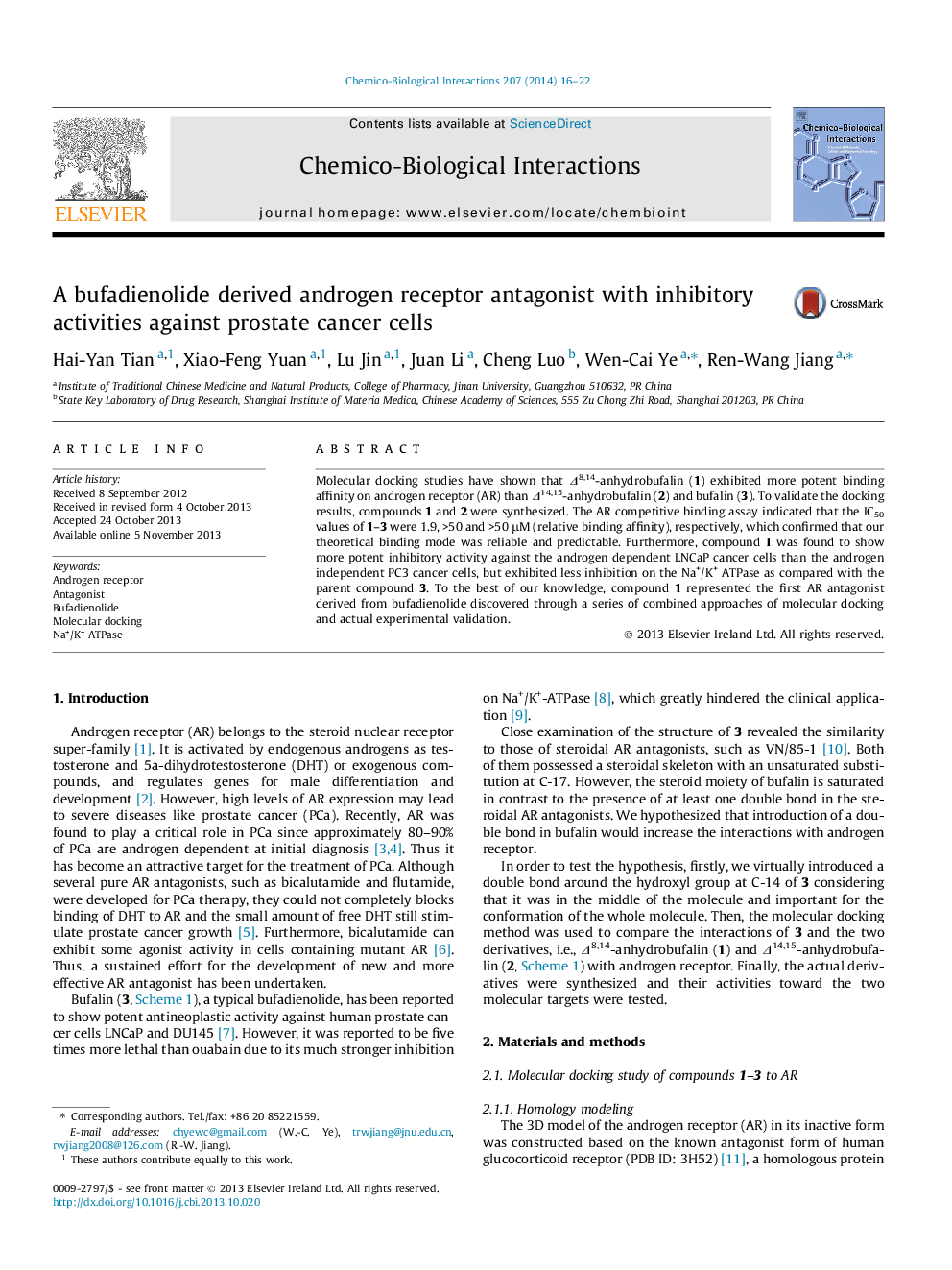| کد مقاله | کد نشریه | سال انتشار | مقاله انگلیسی | نسخه تمام متن |
|---|---|---|---|---|
| 2580589 | 1561634 | 2014 | 7 صفحه PDF | دانلود رایگان |
• The first androgen receptor (AR) antagonist derived from bufadienolide was discovered.
• Compound 1 showed significant affinity on AR.
• Compound 1 exhibited more potent inhibition on LNCaP cancer cells than PC3 cancer cells.
Molecular docking studies have shown that Δ8,14-anhydrobufalin (1) exhibited more potent binding affinity on androgen receptor (AR) than Δ14,15-anhydrobufalin (2) and bufalin (3). To validate the docking results, compounds 1 and 2 were synthesized. The AR competitive binding assay indicated that the IC50 values of 1–3 were 1.9, >50 and >50 μM (relative binding affinity), respectively, which confirmed that our theoretical binding mode was reliable and predictable. Furthermore, compound 1 was found to show more potent inhibitory activity against the androgen dependent LNCaP cancer cells than the androgen independent PC3 cancer cells, but exhibited less inhibition on the Na+/K+ ATPase as compared with the parent compound 3. To the best of our knowledge, compound 1 represented the first AR antagonist derived from bufadienolide discovered through a series of combined approaches of molecular docking and actual experimental validation.
A bufadienolide derived antagonist Δ8,14-anhydrobufalin with inhibitory activity against prostate cancer cells was discovered through virtual structural modification of bufalin and molecular docking analysis, which was validated by a subsequent synthesis and a Polar Screen Androgen Receptor Competitor Assay.Figure optionsDownload as PowerPoint slide
Journal: Chemico-Biological Interactions - Volume 207, 25 January 2014, Pages 16–22
